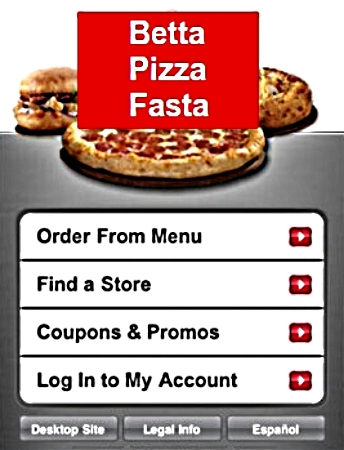Mobile Ready Web Page Design is Top Business Priority
In a sense website design has gone full circle. In the early days speed and capacity limits of both computers and screens and the Internet connection imposed severe limitations on what could be delivered.
The skill and challenge for developers was to deliver a fabulous user experience within these constraints. The next stage was the kaleidoscope of sophistication offers by advances in computers, screen and Internet speeds. Then came mobiles and tablets.
Although mobile screen sizes and quality are getting bigger and phablets are on the rise, these devices impose severe restrictions that has created new challenges for website designers.
Mobile use has exploded and now more than 50% of traffic to major websites comes from mobile users, so the issue cannot be avoided or ignored.

Ways to Meet the challenge of Mobile Optimized Website Design?
People opt for one of four main options:
1. Ignore the problem and let users struggle to use a website designed purely for PCs.
2. Develop Responsive and Flexible web design - These designs start with flexible templates, CSS, tags and JavaScript, that adjusts the template layouts images, and content for any screen size of a hosting device. The next stage is to design multiple layouts for common screen sizes. These solutions are always a compromise. You are trying to squeeze apples and oranges into cherries and grapes. There is always too much information and the layout appearance always suffers. It is impossible to predict and design for all the various shapes and sizes of screens.
3. Develop Separate Mobile URLs and Websites for Mobiles, Tablets and PCs - The using tags the browser detects if the user is using mobile device and sends them to the mobile-optimized version of the site you have developed. For example your site can be set up as 'mobile.nytimes.com' or similar. Having a dedicated version of the site for mobiles allows you to craft the site specifically for mobile users. This solution is trying to deliver the best outcome for both worlds.
4. Focus on Developing Mobile Optimized Websites as the main priority that deliver the same experience on both mobile devices, laptops, Notebooks and PCs. Looking forward, if the current trend continues, more and more people will use Mobile Devices first and foremost, and may only occasionally what to see the SAME site on their PCs. Users don't want to see different things, they want to see the same things, if for example, they are ordering a pizza online. Having different versions only confuses them and destroys the common brand.
A Much Better Way - Design for Mobiles First, from Scratch
- Develop Websites specifically designed for mobile devices and have these layouts as the default for any device.
- People are sick of the 'fluff' and useless complexity anyway. They want sites that deliver what they want is the simplest, neatest and smartest way possible. The mobile layout delivers compressed and pruned information and condensed pathways to get what they want quickly and easily.
- Develop a PC 'Star-Wars' version of the site with all the bells and whistles for users that want it, whether they are on mobiles of PCs. But this is always the second option.
Tips for Crafting Mobile-First Optimized Website Designs
- Focus purely on what you customer needs - Don't use a drill-down approach with a general 'world-view' and a set of links to pathways. Do it the other way round - the expand-up approach. If your site is for ordering pizzas, then make this process simple and efficient, especially for repeat orders. provide what most people want up front, not buried in the depths of the site. Provide links to all the other stuff on employment, health issues etc., if the users want to see this.
- Limit your content, but don't cripple it. Design for mobiles, but in a smart innovative way.
- Use Sub-Domains not Separate Domains. Domains have brand identity that you don't want to compromise. But make the mobile version the landing page.
- Avoid Pop-ups and other dynamic things that don't work on mobiles very well.
- Design the ads and ad layout for mobiles.
- Make the navigation and links easy to operate with fingers and taps.
- Design for Fast Load Speed - Mobile users are impatient, perhaps through bad experiences in the past with loading mega site. They are very sensitive to speed and will go elsewhere if your page takes too long to load
- Measure, analyze and be aware of the users experience and adapt to their needs.